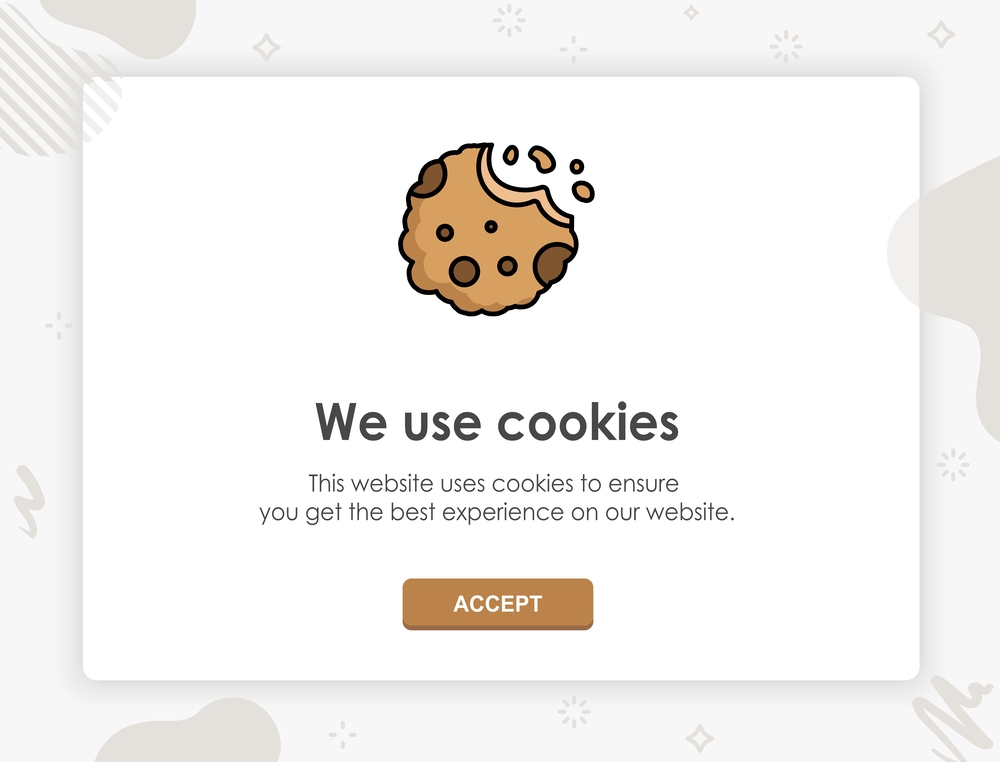Cookies are currently munching away on a field of consumer data in our browsers, and like our old friend the T-Rex, they are inching closer to extinction each day. But targeted advertising isn’t dead, it’s just on the verge of a revolution.
There is a good chance you’ve heard the term “cookieless future” before. While it was thought to be just around the corner, Google just recently announced that they will be extending the deadline for their cookie-blocking privacy plan, stating that they don’t want to hurt ad-dependent websites without having a solid plan. Their plan has been pushed out so that there can be sufficient time for regulators, the general public, publishers and the advertising industry to migrate their services in preparation for this change.
Yet while a cookieless future may sound like the latest sci-fi release, there are many discussions in the mix as to how the future of marketing will look in terms of advertising and data-driven strategies.
Before alarm bells start ringing for marketers everywhere, it’s important to understand how you can update your marketing strategy to stay ahead of the curve before the deprecation of third-party cookies. Learn how your business may be affected, but also how to profit from this change, as we place the spotlight on first-party cookies and different ways to think about data collection.
In this article we will explore the following three points:
- What is a cookieless future?
- Why advertising without cookies isn’t the end
- The five points for success
So, why are we getting rid of cookies?
Let’s start with a brief introduction of what third-party cookies are. They’re bits of technology that are placed on websites so that ad companies and data brokers can track website visitors across the internet. Through third-party cookies, website operators can determine which sites you visit, using this information to build a profile of what your specific interests and activities are. This is then used to create specifically targeted ads.
Read more about the different types of cookies in our extensive knowledge hub.
Because of tracking, consumers everywhere are placing privacy and security concerns at the top of their lists of concerns online, and rightly so. Data breaches are continuously making headlines, raising awareness that protecting privacy is crucial. Recent studies have shown that consumers will take their purchases elsewhere if they don’t trust an ecommerce website.
According to Gartner’s Brand Survey of 2019, a little over 80 percent of customers will not stand behind a company they don’t trust, and almost 90 percent of customers will detach themselves from a company that breaches trust. At the same time, the paradox remains: as we navigate through a highly digitalized world, consumers expect a certain level of personalized advertising in order to make decisions about their purchases with ease. That is why it is more important than ever to start early with understanding how to best develop your marketing strategy to be able to advertise without relying solely on third-party cookies.
But what exactly is a cookieless future?
Google plans to fully phase out the use of third-party cookies in the Chrome browser, though their deadline to complete this has been pushed back several times. This is part of a broader strategy, which is a move in the right direction towards stronger privacy regulation in light of international laws like the European Union’s General Data Protection Regulation (GDPR) and the California Consumer Privacy Act (CCPA).
What does the cookieless timeline have in store? According to an article in USA Today, Google aimed to have new technology to replace third-party cookies by the end of 2022 so developers could start adopting the new technology to allow for cookies to be phased out in line with their 2023 deadline. However, since then Google has pushed back the deadline several times. What are the technologies? Unfortunately, the answer isn’t yet clear. Some speculation is that Apple plans to make the mobile device ID, also known as the Identifier for Advertisers (IDFA) opt-in only. USA Today states that one of Google’s leading ideas to replace third-party cookies is “a technique that hides users in large online groups based on their interests while keeping web browsing histories on devices to maintain privacy.”

How can marketers best prepare?
As with many things, the key is to start early. A recent study by Adobe found that only 37 percent of companies are prepared for a future without third-party cookies as a main piece of their advertising strategy. Therefore, the moment to make a move is now so that companies can solidify their marketing strategy and gain a competitive advantage.
“Keeping up with the latest changes can be like jumping on a treadmill when it’s already going,” says Nishant Bhajaria, privacy architect at Uber and author of the book Privacy Engineering. “Important with data privacy is that as a company, you don’t only take action when it is too late”.
Nischant has years of experience engineering privacy technologies, which he shares in his latest book, which he wrote to help companies become privacy-ready. Throughout his work, Nischant also states the importance of coordination among the different sectors of a company, such as legal, tech and marketing to create a data privacy strategy that is realistic for all departments.
Back to basics – the traditional model of advertising
To keep up, marketers will need to be strategic and focus on first-party cookies. If your company relies on third-party cookies, it’s time to look for alternatives.
When speaking to marketing professionals, some of the suggestions out there are to start buying media that uses people-based identifiers like Google or Facebook do. Mark Rank, CEO of Ipull, gave this advice in an interview on Tech That Talks. People-based identifiers are necessary as they prevent solely relying on cookies and other device-based identifiers, as well as improve ROI and accurate measurement.
Using a people-based identifier is more accurate because 100 percent of your impressions can be measured across the entire advertising ecosystem. In this situation there is no data loss due to cookie syncs. “What this means is that it takes the guesswork out of conversion analysis, frequency optimisation and suppressions. Your ad dollars are precious.”
“Companies will have to invest more resources in old fashioned and creative marketing,” noted Nerissa Marbury, CEO of Oneepiphany, during a Usercentrics Tech That Talks panel discussion. Marketers and website providers need to come up with new and improved ways to connect with customers.
Channels such as television, direct mail, point-of-sale personalization, search and email are crucial for a strong marketing strategy, as these media work together. They can ultimately optimize the customer experience, exponentially for positive business results. Whether they’re interacting with consumers in-store, on their website or mobile app, or even through call centres, every touch point and every engagement needs to be cohesive, personalized and precise.
Companies also need to do more data warehousing of their own. For example, with Google Analytics 4 there’s more data in big queries. Rank notes, “Websites should also be moving to other tracking methods, like requiring logins for free content and then using this type of data to create more general advertising”.
There we have it. The future of marketing, straight from the marketers themselves.
Why programmatic advertising isn't the only solution
According to research, there’s no reason to worry about focusing on first-party cookies. Many studies have shown that the presence of third-party cookies and tracking didn’t substantially increase publisher revenues. What was found is that they actually reduced revenues and increased risk for the publishers. As an article in Forbes states,
“privacy regulations are being enforced around the world, which increases compliance and regulatory risk for publishers that continue allowing [third-party (3P)] trackers on their sites, harvesting data from their users and sending it to ad tech vendors without their knowledge or consent”.
Marketers will need to consider whether targeting down to the level of the individual is actually worth it or if it even works in the first place, given how poor the data quality is.
Augustine Fou is an author and data researcher whose work shows how ad targeting does not mean that the ads are of better quality. We spoke with Dr. Fou on Tech That Talks about the accuracy of using third-party cookie data. Fou’s research has shown that the quality of data collected from third-party data cookies can often be of low quality due to bots. What people don’t take into account, he says, is that “bots deliberately abuse 3P cookies to pretend to be specific desirable audience segments, so they can earn higher CPMs from advertisers paying to target them”.
For this reason, many might not even see a cookieless future as an issue. Dr. Fou, who has multiple years of experience researching bots and other data driving technologies, certainly doesn’t. His latest article for Forbes is titled How accurate is programmatic ad targeting?, and highlights just that.
Dr. Fou notes that with enough bits of information, a relatively unique “fingerprint” can be created to identify each user without 3P cookies.
Five important factors to keep in mind
1. Understand the situation
Interviewing experts in the tech space makes one thing clear. There is no one answer as to what the near future may hold. The best way to stay prepared is to keep up with the latest news regarding privacy and adtech changes. A strong understanding of the current environment is essential to being prepared for upcoming changes. Many data privacy websites, such as our own Knowledge Hub or the IABB.
2. Identify which cookies you are using
Using tools like our free website audit can help you identify if your website is placing third-party cookies or first-party cookies, and, if so, which ones. This can help you identify just how much your website relies on third-party cookies.
3. Identify tools to replace third-party cookies
New tools and programs are already in development to replace third-party cookies. For example, Google’s solution uses its “Privacy Sandbox” and what it calls Federated Learning of Cohorts (FLoC) is a new way to collect user information in groups without identifying any specific user. It is one of the latest solutions currently available to test. However, marketers can also focus on tools such as email campaigns to create personalized groups for creating advertising .
4. Invest in more meaningful content
Once you have identified where you are using first- and third-party cookies, you will be able to see gaps in the data. Use this to see where you can collect further first-party data and be prepared for any changes.
5. Let’s see this as an opportunity
The deprecation of third-party cookies doesn’t mean that things have to turn into a cookie-pocalypse. Instead, this new normal can be a catalyst, one that gives businesses an opportunity to take a step back and figure it all out, and to ask themselves how they will improve their customer experiences. And to make things even more interesting, businesses will have to handle the data while also ensuring that they’re honoring consumer privacy and complying with relevant regulations.

